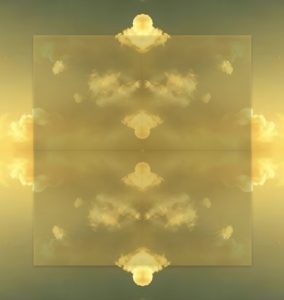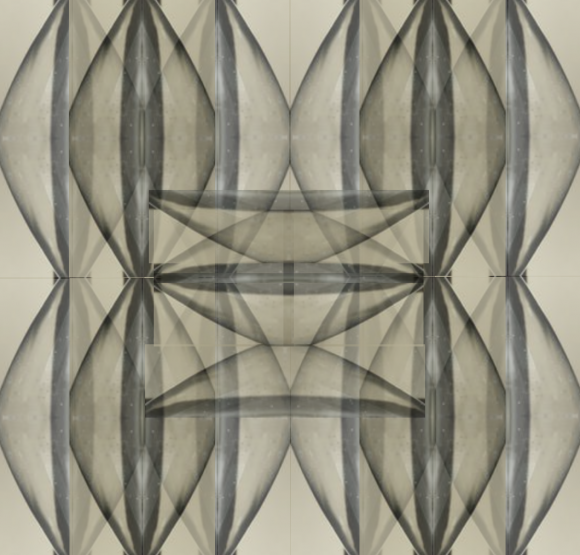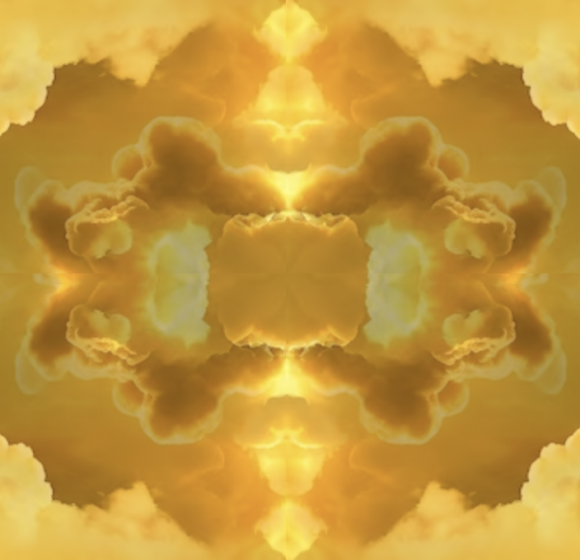I recently looked at an interesting meditation from tantric Buddhism, as described by Jung: a meditation which works by visualizing one’s psychological functions as separate personified figures. In Jungian terminology (though Jung himself didn’t put it that way) we might call this “withdrawing projections from the ego”. Now with respect to the particular example we looked at (namely: the sense functions), an obvious problem immediately presents itself.

2. Consider the example of seeing. Thanks to the insight from the meditation, we realize that it is not the conscious personality (the ego) who is actually seeing — it’s the personified sense of sight, represented by a figure we just visualized, who does that.
Of course, from the perspective of the ego (which is false) it looks different. From that perspective, the ego both produces the percept and is aware of it. That self-misunderstanding (so to speak) of the ego is the result of an unconscious projection, where the unconscious process which actually does the seeing projects itself onto the ego, thus making it appear (to the ego) that the ego does that. But precisely that is the projection we can withdraw as a result of the meditation Jung described; and having done so, we realize that it’s not the ego who sees, but something else — something we imagine in a personified form (as part of the meditation).
However, the percept needs to come to consciousness at some point, and thus somehow get to the ego. If we imagine the function of seeing as a separate person, then in that metaphorical (visualized) way of presenting it, the personified sense of sight must somehow bring the percept to the ego. How does this look (in the metaphorical presentation we’re considering)?
It cannot be (and that’s the problem) that the personified sense of sight shows the percept to the ego, who then sees it — for that would be circular. The whole point of the metaphor is to make sure that the ego is not the one who is doing the seeing, and what would be the point of that if the ego then needs to “see” the percept, only now as shown by the personified function of seeing? Instead of looking at the outside world, the ego would simply look at an interior show presented by the sensory function. But the ego would still have to “see”.
Jung’s own illustration unwittingly brings the point to the fore:
one empties oneself of these functions. One no longer has them. One pushes them away. Instead of being a personality one is now an entire theater represented by a troupe of actors who are these distinct functions. The whole personality, all my functions, are paraded before me as autonomous figures. Through this I have become completely empty.
C. G. Jung, Psychology of Yoga and Meditation, 96.
What is important to Jung, of course, is primarily the autonomous character of all these functions. If the meditation succeeds, that is what it brings out. The personality as a whole is complex and polycentric, and the ego is not even a player, but in many ways merely a spectator: its only function is the lifting of psychological contents (generated by all the actual players, i.e. the autonomous figures) into awareness.
But the metaphor Jung chooses for this latter role of the ego is that of “watching theatre”. And this, again, makes it circular: if the ego now watches the theatre show instead of the external world, then how is it more empty now than it was before?
Before, “I” was looking at the colors and forms of the world, listening to its sounds, touching and tasting and smelling its objects, … But now — what’s different? “I” am looking at the colors and forms shown to me by the personalized seeing function, listening to the sounds forwarded by the personalized hearing function, and so on. (In curious analogy, cognitive scientist Daniel Dennett has, some fifty years after Jung, dubbed this misconstruction the notion of a “cartesian theatre”.)
3. Strictly speaking, this is a problem only with the sensory functions. Others, such as the thinking and feeling functions, are less obviously circular in the “theatre” metaphor.
The division of labor is principally the same, of course: thoughts, for example, are produced by the personified thinking function, and the ego’s job is merely to be aware of them. Again, the ego (before the insight produced by the meditation) will routinely be under the wrong impression that it produces the thoughts, in addition to becoming aware of them. That, again, is because of a projection. It’s that projection that must be withdrawn from the ego, and the thought-producing function must be re-established properly as separate and autonomous. But then, afterwards, how would we imagine those thoughts to be exchanged between the personified thinking function and the ego? Again, there seems to be a missing link here, a blindspot in the image or scene which we paint by means of this visualization.
The difference between the transfer of thoughts (in the relationship between the ego and the personified thinking function) and the percept transfer (in the relationship between the ego and the sense functions, i.e. seeing, hearing, and so on) is this: in the latter case, the first and obvious idea which we might have is the transfer by showing, telling, and so on, i.e. a transfer which is modeled on sense perception itself. And this is what makes it circular — and redundant, too: why should we imagine the extra complexity of an intermediary?
And the answer to that question surely has to be: we shouldn’t imagine an intermediary. The personified seeing function really is the one who does the seeing, but then it doesn’t show anything to the ego, precisely because the ego doesn’t see anything. The percept is shared between them, but not in a way modeled on the process of sense perception. This, for one thing, avoids the circularity in the image; for another, it is applicable also to the other functions: a thought is shared between the personified thinking function and the ego (in a way not modeled on the usual way of communicating thoughts, i.e. a talking/listening interaction); a feeling or an intuition are shared by the personified feeling or intuition functions, respectively, with the ego, again in a way not modeled on the interactions of people in the real world (which usually give rise to emotions or intuitions), and so on.
So the visualization described in the tantric meditation technique (and such metaphors as Jung’s theatre comparison) has narrow limits: it serves to clarify the autonomous status of these psychological functions, and to withdraw the projections by which the ego’s self-image wrongly implies that they belong to it (that the ego “has them”). But it is not suitable to then represent the more complex picture (to the introspective self-understanding) that now emerges of the intra-psychic interactions. If we try to read that into the visualization, we end up in circularity.
(I have already pointed out that, compared to the tantric meditation Jung is talking about, the mirror theory from Renaissance neoplatonism does not have this weakness; it avoids the circularity, even though it still operates with a visual metaphor, that of the “spiritual mirror”.)



